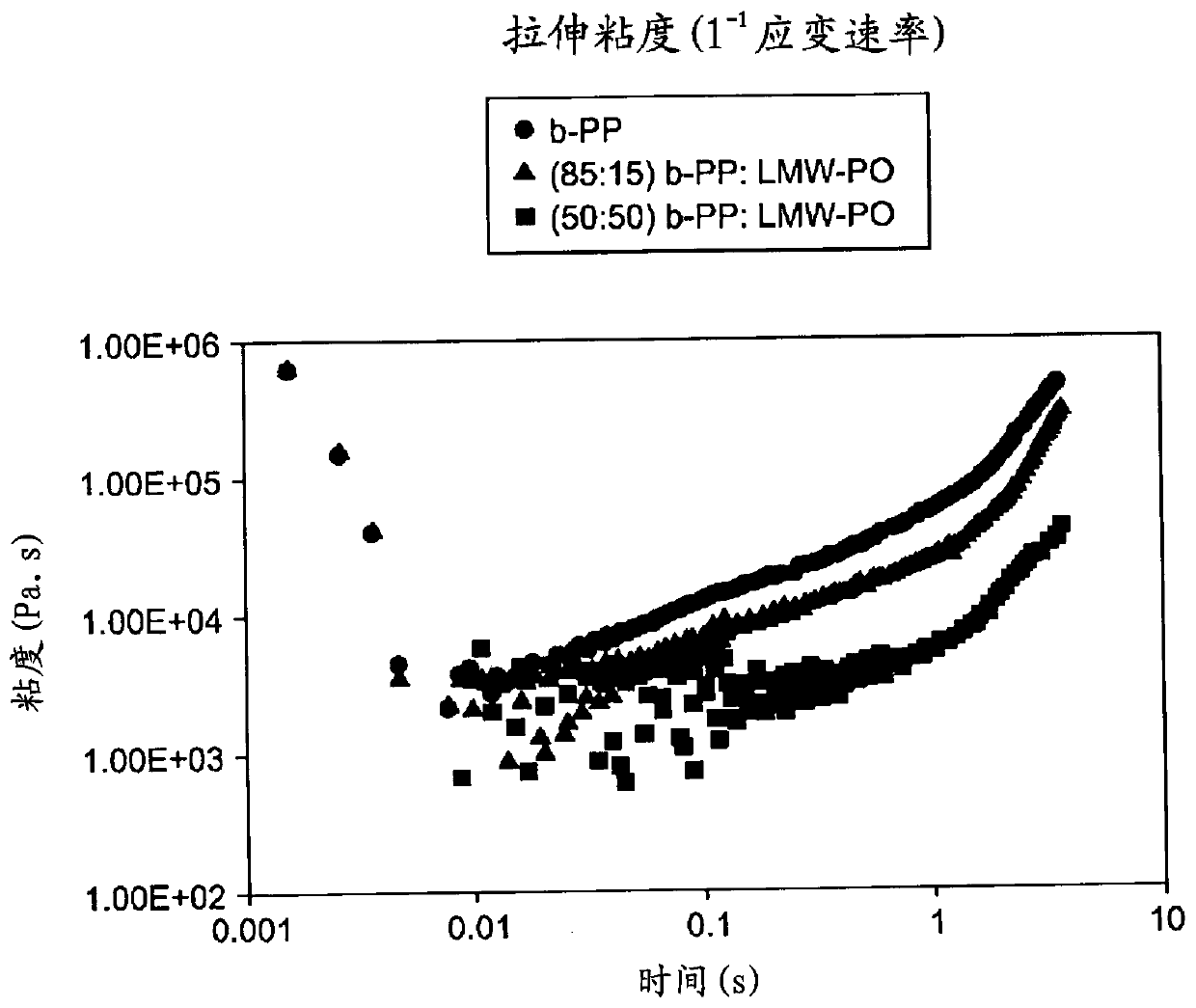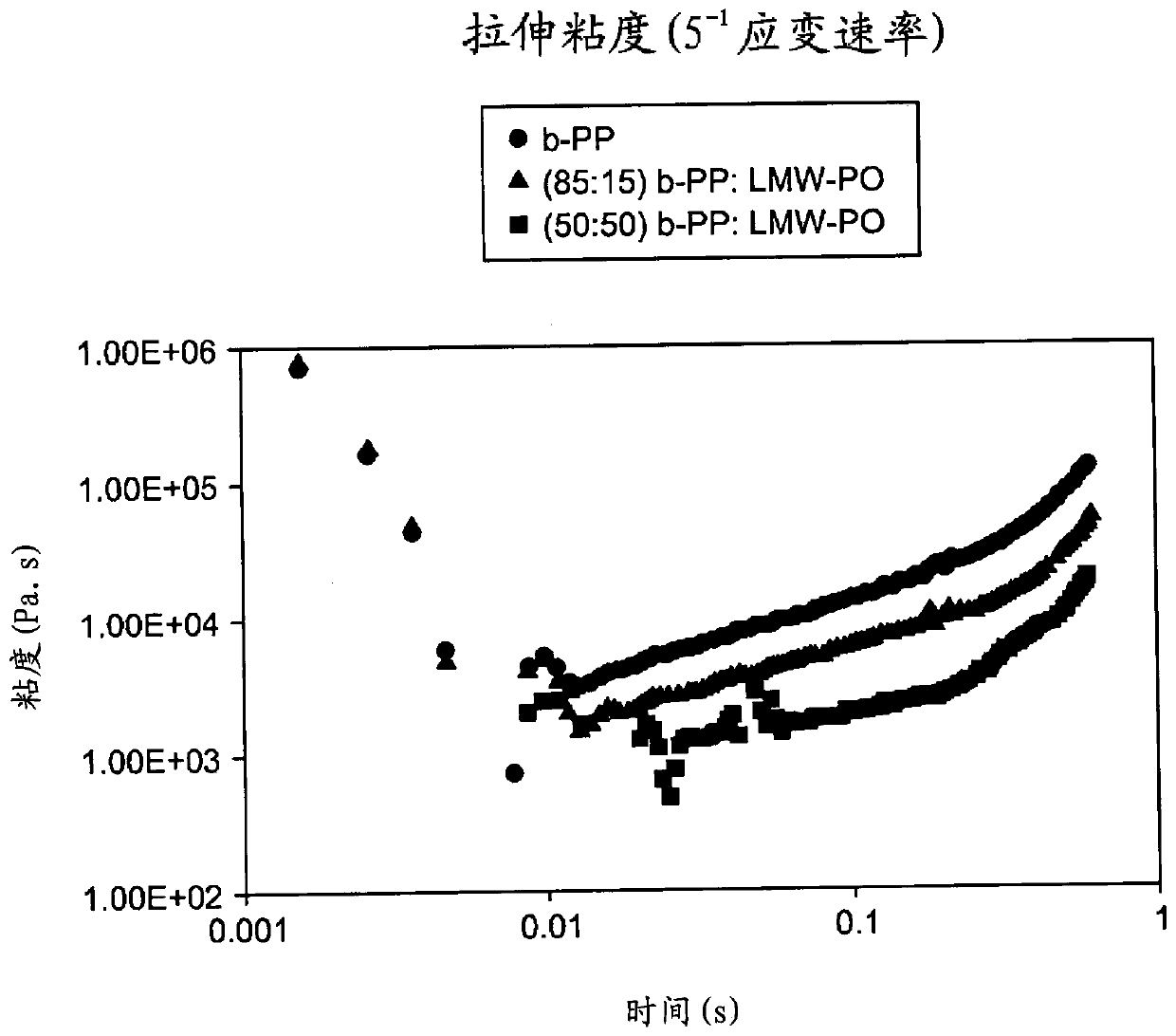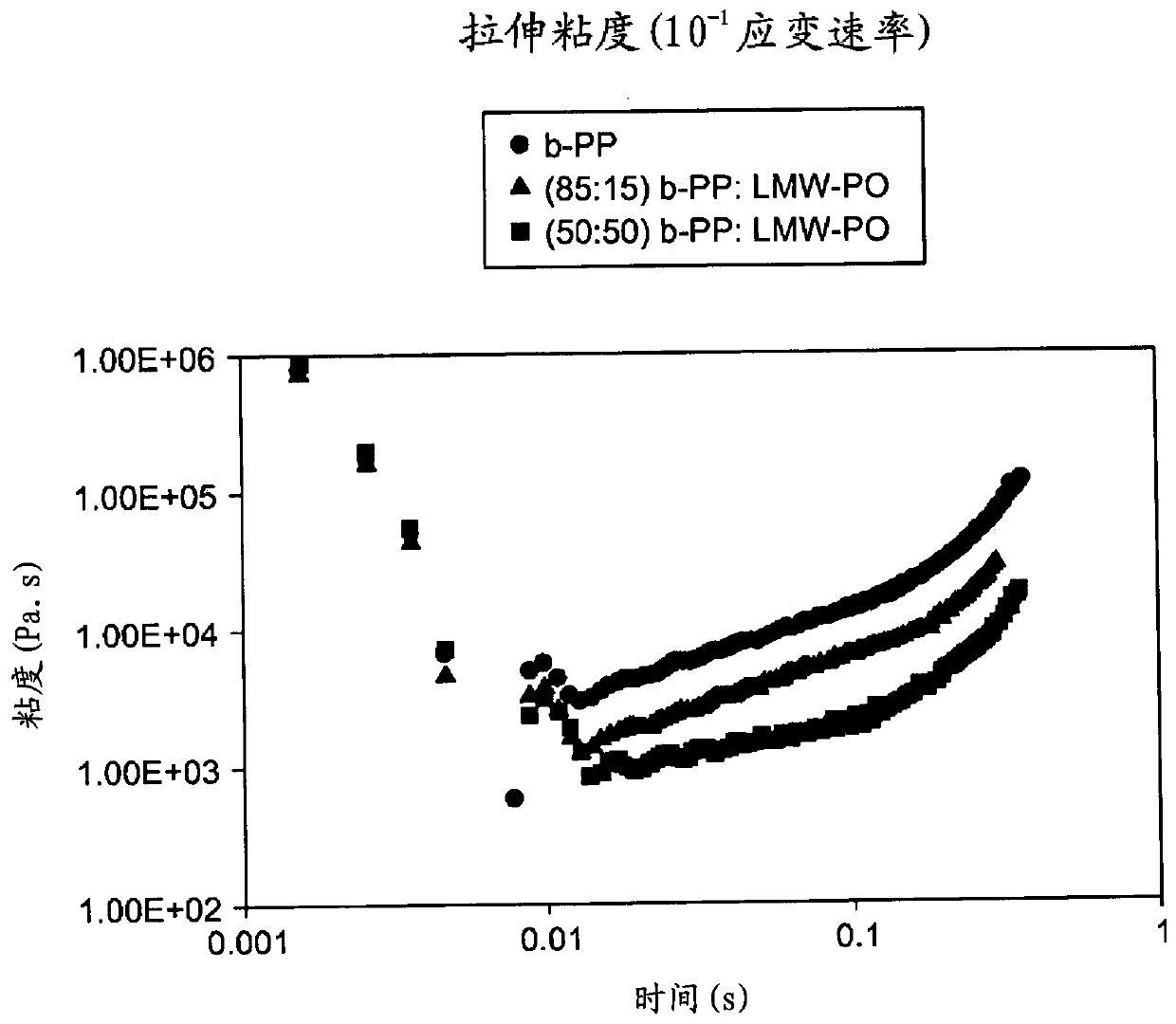High melt strength polypropylenes with improved processability
A melt strength, linear polypropylene technology, applied in the field of blends of polypropylene and low molecular weight polyolefin, can solve the problem of reducing strain hardening
- Summary
- Abstract
- Description
- Claims
- Application Information
AI Technical Summary
Problems solved by technology
Method used
Image
Examples
Embodiment
[0095] The characteristics of the invention are demonstrated by the following non-limiting examples. First, the test methods and experimental procedures are described.
[0096] MFR. ASTM D1238, at 230°C, using a 2.16 kg load.
[0097] Molecular weights were determined using DRI (GPC-3D). This method describes two different methods for determining the molecular weight moments of the polymers described herein (as noted, the so-called "GPC-3D" method and the "GPC-4D" method, Each method is based on gel permeation chromatography (GPC), but uses a different detection method than the first. In the GPC-3D method, the number average molecular weight (Mn) value is determined by using high temperature gel permeation chromatography (Agilent PL-220), which is equipped with three online detectors, differential refractive index detector (DRI), light scattering ( LS) detector and viscometer. Three Agilent PLgel 10 μm Mix-B LS columns were used. The nominal flow rate is 0.5 mL / min, and ...
PUM
| Property | Measurement | Unit |
|---|---|---|
| melt flow index | aaaaa | aaaaa |
| melt flow index | aaaaa | aaaaa |
| melt strength | aaaaa | aaaaa |
Abstract
Description
Claims
Application Information
 Login to View More
Login to View More - R&D
- Intellectual Property
- Life Sciences
- Materials
- Tech Scout
- Unparalleled Data Quality
- Higher Quality Content
- 60% Fewer Hallucinations
Browse by: Latest US Patents, China's latest patents, Technical Efficacy Thesaurus, Application Domain, Technology Topic, Popular Technical Reports.
© 2025 PatSnap. All rights reserved.Legal|Privacy policy|Modern Slavery Act Transparency Statement|Sitemap|About US| Contact US: help@patsnap.com



